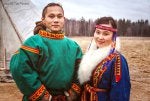i heard that there are sizeable population of non ‘han’ or ‘mongoloid’ ethnic whites in western china bordering central asia and russia. They look clearly european or turkish.
Are there any studies on them? when did they get incorporated into china? was it during the border clashes with the Russians from the 19th century onwards? or were they there going back to Genghis Khan and before?
Do they speak their local language and practice own culture and religion?
i noticed some are used in the military or border guards so i suppose to work for the state you have to speak chinese. how do they fit into mainstream society? Do they face discrimination like other minority groups? are any in senior positions of the Communist Party it local or central government? or is participation open to ethnic Chinese only?
Are there any studies on them? when did they get incorporated into china? was it during the border clashes with the Russians from the 19th century onwards? or were they there going back to Genghis Khan and before?
Do they speak their local language and practice own culture and religion?
i noticed some are used in the military or border guards so i suppose to work for the state you have to speak chinese. how do they fit into mainstream society? Do they face discrimination like other minority groups? are any in senior positions of the Communist Party it local or central government? or is participation open to ethnic Chinese only?












